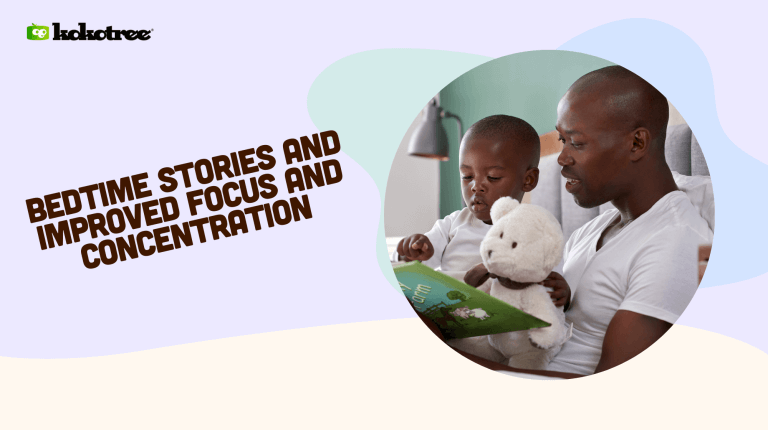

Written by: Kokotree
Last updated:

Bedtime stories have been a cherished tradition for centuries, serving as a bridge between the bustling day and tranquil night. Yet, these tales offer more than just a soothing escape into magical worlds; they can be instrumental in teaching essential skills to children. One such invaluable skill is the art of focus and concentration. In today’s fast-paced digital age, ensuring our kids possess these abilities is more critical than ever.
Quick Summary:
From the early stages of life, children are natural explorers. Their minds are constantly processing new information, emotions, and experiences. Focus and concentration act as the cornerstones that help them navigate this journey efficiently. Developing these skills early on can have several advantages:
When we get into the mechanics of storytelling, it becomes evident why they’re such powerful tools. Children’s brains, always eager for stimuli, resonate with the cadence and imagery of stories. Here’s how:
Selecting the right bedtime stories for kids can significantly enhance the concentration-training process. Here’s a curated list of tales that can do wonders:
(Note: “The Little Engine That Could” is often attributed to Watty Piper, a pen name for Arnold Munk, who was the owner of the publishing firm that first released the book. However, it’s worth mentioning that the story had several versions and contributors over time.)
These tales, each in their unique way, not only entertain but also enhance the focus and concentration of young listeners.
To maximize the benefits of these stories, consider the following tips:
Go beyond just reading. Integrate these activities to enhance focus:
For those keen on exploring more:
The ritual of bedtime storytelling weaves a spell of bonding, entertainment, and education. It’s a magical moment where children not only wander in enchanted lands but also develop essential life skills. As children grow, the stories might change, but the lessons of focus and concentration remain invaluable.




